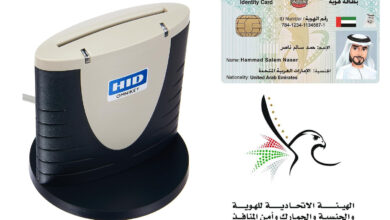Level Up Your Online Presence: Build a Stunning Website Yourself with WordPress in 2025

In today’s digital-first world, having a robust online presence is not optional—it’s a necessity. Whether you’re running a business, creating a portfolio, or starting a blog, a professional website can be your most powerful tool. The good news? You don’t need to hire a web developer or learn complex coding to create a stunning website. With WordPress, you can build a sleek and functional site yourself—even in 2025.
This step-by-step guide will walk you through everything you need to know to design a stunning website with WordPress, from choosing the right hosting to customizing your site with a premium theme from ThemeForest. Let’s dive in!
- Step 1: Understand Why WordPress is the Best Choice
- Step 2: Choose a Domain Name and Web Hosting
- Step 3: Install WordPress
- Step 4: Choose and Install a WordPress Theme
- Step 5: Customize Your Website
- Step 6: Optimize Your Website for Performance and SEO
- Step 7: Make Your Website Mobile-Friendly
- Step 8: Secure and Launch Your Website
- Final Thoughts
Step 1: Understand Why WordPress is the Best Choice
WordPress is the most popular content management system (CMS) in the world, powering over 43% of all websites. Its success stems from several advantages:
- User-Friendly: No coding experience required.
- Customizable: Thousands of themes and plugins to choose from.
- Scalable: Suitable for small blogs and large e-commerce websites.
- SEO-Friendly: Built-in SEO tools and compatibility with plugins like Yoast SEO.
- Affordable: Low setup costs compared to hiring developers.
Step 2: Choose a Domain Name and Web Hosting
Before building your website, you need a domain name and web hosting:
- Domain Name: Your website’s address (e.g., www.yourbusiness.com). Choose something that reflects your brand, is easy to remember, and preferably ends with “.com.” you can get cheapest domain with Hostinger.com.
- Web Hosting: A service that stores your website files and makes them accessible online. Recommended hosting providers include:
- Hostinger
- SiteGround
- HostGator
- Bluehost
Pro Tip: Many hosting providers, like Hostinger.com offer free domain registration for the first year when you purchase a hosting plan.

Step 3: Install WordPress
Most hosting providers offer one-click WordPress installation. Once installed, you’ll receive login credentials to access your WordPress dashboard—the control center for your website.
Step 4: Choose and Install a WordPress Theme
Your website’s design largely depends on the theme you choose. WordPress offers a library of free themes, but for a truly professional look, consider purchasing a premium theme from ThemeForest. Here’s why:
- Unique Designs: Stand out with modern, niche-specific themes.
- Advanced Features: Built-in customization options, sliders, and premium plugins.
- Dedicated Support: Access to updates and support from theme developers.
How to Buy and Install a Theme:
- Visit ThemeForest and browse their extensive collection of themes.
- Use filters to narrow down options by category (e.g., business, e-commerce, portfolio).
- Purchase your chosen theme and download the .zip file.
- In your WordPress dashboard, go to Appearance > Themes > Add New, and upload the theme’s .zip file.
- Activate the theme and follow its documentation to customize.
Step 5: Customize Your Website
Once your theme is installed, it’s time to make it your own:
1. Set Up Pages:
Create essential pages like:
- Home: Your landing page.
- About: Share your story or business details.
- Services/Portfolio: Highlight what you offer.
- Contact: Add a form and contact details.
- Blog: Share updates or articles.
Go to Pages > Add New in your WordPress dashboard to create and edit pages.
2. Customize with Widgets and Plugins:
Widgets and plugins can enhance functionality. Recommended plugins include:
- Yoast SEO: Optimize your website for search engines.
- Elementor: A drag-and-drop page builder for design flexibility.
- Contact Form 7: Create custom forms.
- WooCommerce: Build an e-commerce store.
3. Upload Your Content:
Use high-quality images and write engaging content tailored to your audience. Tools like Canva can help you design graphics.
Step 6: Optimize Your Website for Performance and SEO
A fast-loading, search-engine-friendly website is crucial:
- Performance:
- Use a caching plugin like WP Super Cache or W3 Total Cache.
- Compress images with tools like Smush.
- Choose lightweight themes and plugins.
- SEO:
- Research keywords with tools like Google Keyword Planner.
- Optimize meta titles and descriptions using Yoast SEO.
- Build backlinks to improve search rankings.
Step 7: Make Your Website Mobile-Friendly
With mobile users surpassing desktop users, responsiveness is key. Most premium themes from ThemeForest are mobile-friendly by default. Test your website’s responsiveness using Google’s Mobile-Friendly Test.
Step 8: Secure and Launch Your Website
Before going live:
- Install an SSL certificate (many hosting providers include this for free).
- Back up your website regularly with plugins like UpdraftPlus.
- Test your site on multiple browsers.
Once everything is set, announce your launch on social media and start promoting!
Final Thoughts
Building a website with WordPress in 2025 is more accessible than ever, thanks to its user-friendly interface and the availability of premium themes on platforms like ThemeForest. By following the steps above, you’ll not only save money but also have full control over your online presence.
Whether you’re a beginner or a seasoned pro, the tools and resources are at your fingertips. So why wait? Start building your stunning website today and take your online presence to the next level!
If you found this guide helpful, don’t forget to check out our other blog posts for more tips and tutorials










